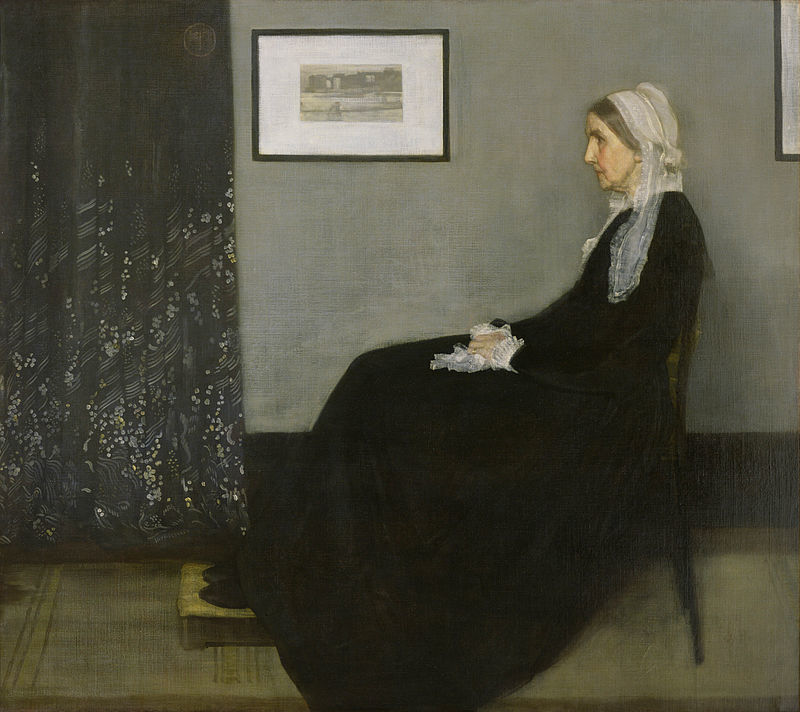Whistler’s Mother is the colloquial name of the oil on canvas painting by James McNeill Whistler called the Arrangement in Grey and Black No.1, which was painted in 1871. The popular name of the painting arose from the fact that the subject of the painting is the painter’s mother, whose name is Anna McNeill Whistler. Whistler’s Mother is considered to be the most famous painting by an American, even though it was painted in New York. In fact, there are some art experts who claim that it is an icon for American motherhood, parenthood, and family values. To understand how the amazing painting came to be, as well as the various interpretations behind it, here is an introduction to Whistler’s Mother.
Origins and Interpretations
Whistler’s Mother was painted by James Whistler when she was living with her mother at a small house located at Cheyne Walk in Chelsea, London. It is believed that Whistler originally intended to hire a model to pose for the painting, but when he appointed one, the model did not arrive at his house. Then, he asked his mother to serve as the replacement for the model. There is another story surrounding the painting, wherein Whistler was supposed to paint the model while he or she is standing up, but because her mother was old, she could not stand up for longer periods, hence the reason why her portrait was painted while she was sitting.
James Whistler gave the painting to the administrators of the Exhibition of the Royal Academy of Art in 1872. The painting was almost rejected, but thanks to art director Sir William Boxall’s approval, it eventually found its way as one of the display pieces for the exhibition, although the organizers placed it in an unpleasant location in the exhibit. The painting was named “Arrangement in Grey and Black: Portrait of the Painter’s Mother” at the exhibit.
Many people in the British art world criticize the painting, as they believed that it lacked substance and meaning. However, there are a few who saw the artwork’s beauty, and one of those few was Thomas Carlyle. Out of admiration for Whistler’s art, Carlyle agreed to serve as a model for Whistler’s painting, which will soon be called Arrangement in Grey and Black, No.2. The said painting is currently in the Kelvingrove Art Gallery and Museum, located in Glasgow, Scotland.
Since there was not much interest in Whistler’s Mother back then, Whistler pawned the painting in 1891. The pawned painting was eventually acquired by the Musée du Luxembourg in Paris. It was during its time at the said museum where the painting quickly rose in popularity. From then on, the painting was imitated by many painters, and it was even parodied in comic strips.
Because Whistler was struggling financially, the popularity of Whistler’s Mother helped him sell his next paintings to wealthy art collectors and exhibitors in the United States. During this time, Whistler was quoted saying that the reception of his art in Britain and the United States is vastly different, as he felt more appreciated in the US. He also stated that the popularity of Whistler’s Mother was “a slap in the face” for those who rejected the painting in the Royal Academy of Art.
However, Whistler didn’t like that art enthusiasts are trying to interpret the painting to have meaning or symbolism. Whistler is a known advocate of the “art for art’s sake” style, where art should be beautiful even if it doesn’t have any moral or political values. For Whistler, the painting is only a portrait of his mother, and nothing else.
Regardless of Whistler’s opinion on his painting, Whistler’s Mother was still given meaning by many people, particularly the ones who live in the United States. For these people, Whistler’s Mother symbolizes a son’s love for his mother and also a mother’s support for his son’s dreams and ambitions. Anna McNeill Whistler eventually became the icon of motherhood in the US, as she represents the love and care that every mother should give for their son. This interpretation was further emphasized when the US Post Office Department printed stamp cards that bear the image of Whistler’s Mother along with the slogan, “In memory and in honor of the mother of America.” Furthermore, a statue of Whistler’s Mother was also created in Ashland, Pennsylvania, in 1938 as a tribute to the mothers during the Great Depression.
Whistler’s Mother became an iconic figure in popular culture as well, as she and the portrait of her would appear in various films, including The Rocky Horror Picture Show in 1975, Bean in 1997, and Cloudy with a Chance of Meatballs 2 in 2013. Despite being an American icon, Whistler’s Mother is still in the hands of France, and it is currently in display at the Musée d’Orsay in Paris.
